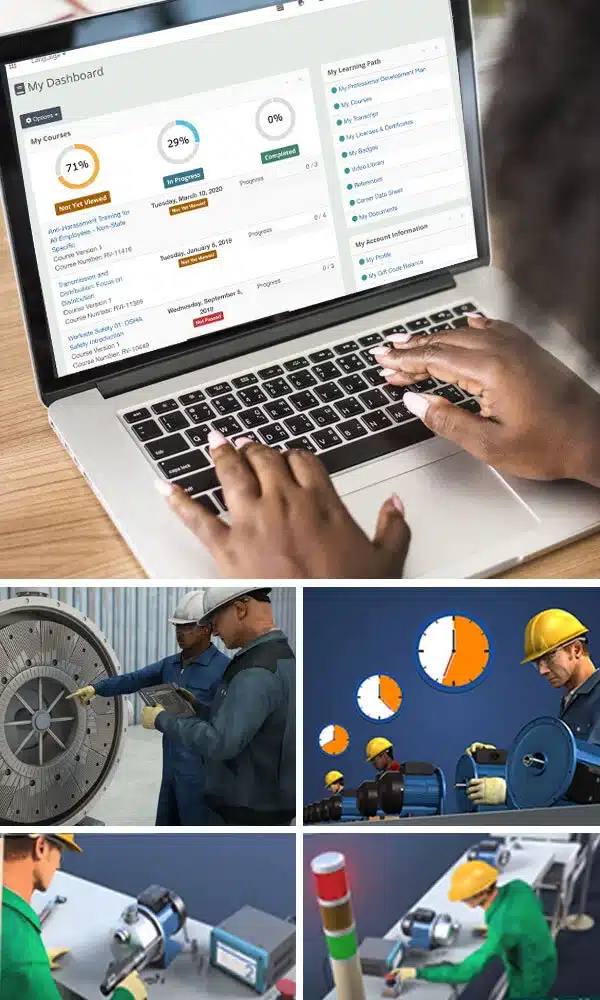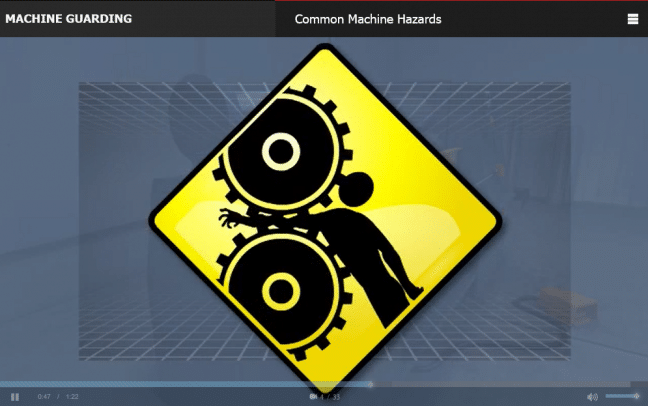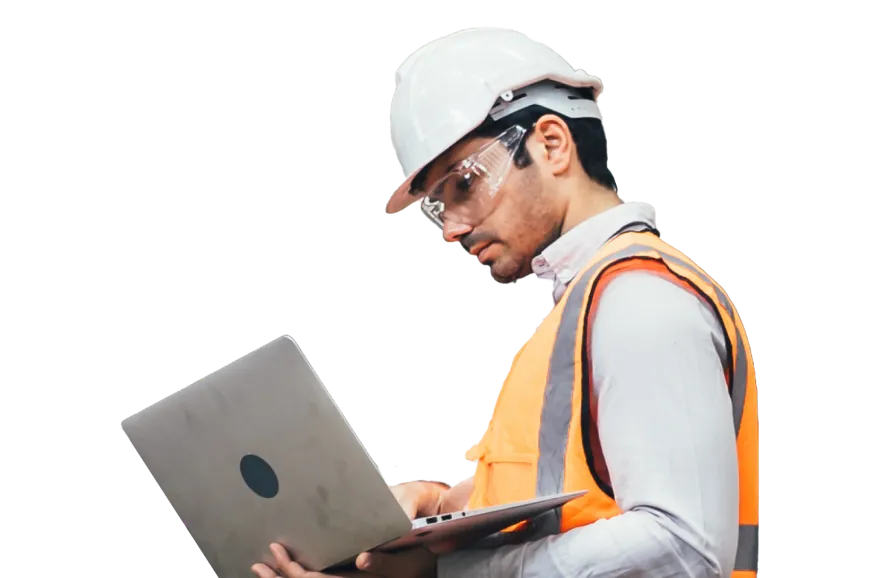March 30, 2017 5 min read
5 Manufacturing Safety Topics for a Safer Workplace
Industry:
Solution:
No matter your occupation, workplace safety is vital. However, it is especially important in the manufacturing industry since you are dealing with heavy machinery. Therefore, taking safety precautions seriously and conducting safety training is extremely important for manufacturing jobs.
According to OSHA, companies that focus on worker’s safety have nearly 50 percent fewer lost workdays. To keep employees interested when conducting safety training and in safety meetings, make sure to show your concern about your employees being potentially injured. Also, praise employees who work safely and encourage reporting accidents and injuries.
We’ve got some tips for helping to keep people safe on the job below. In addition, you may find our article on manufacturing safety training tips helpful.

Vector EHS Management Software empowers organizations – from global leaders to local businesses – to improve workplace safety and comply with environmental, health, and safety regulations.
Learn more about how our software can save you valuable time and effort in recording, tracking, and analyzing your EHS activities.
Learn more about how we can help:
- Incident Management Software →
- EHS Inspection Software →
- Key Safety Metrics Dashboard →
- Learning Management System (LMS) and Online Training Courses →
- Mobile Risk Communication Platform
Download our EHS Management Software Buyer’s Guide.
5 Manufacturing Safety Tips
Here are five helpful tips to keep workers safe on the job.
1. Use and Maintain Equipment Properly
The most prevalent cause of workplace injuries is misusing tools and machinery. Only use equipment for its intended purpose and make sure you use it properly. Furthermore, regularly cleaning and inspecting equipment lessens the likelihood of a fire, explosion, or other injuries. For instance, dust can cause an explosion if it catches on fire. To prevent dust accumulation, use industrial vacuums to clean machines where dust gathers.
Also, make sure that when tools are not being used, they are stored in their assigned location. When storing tools, make sure they are put in their proper place and shut down properly. If a piece of equipment is not functioning correctly, report it immediately, and do not use the machinery until it is repaired.
We make many courses that cover topics related to the above. One example is our 5S Methodology course, which stresses the importance of a clean, organized workplace and putting tools in their proper place.
For more, check out our online Equipment Safety training course library.
2. Avoid Trips, Slips, and Falls
Liberty Mutual found that falls on the same level and falls to a lower level were two of the top three most common and costly causes of disability injury.
To prevent employees from tripping or slipping, it is vital to ensure that aisles are clear and spills are immediately cleaned. Be sure to mark any areas where a spill occurred until it can be cleaned. If an area cannot be easily cleaned, especially if it is an area where your company often uses liquids, consider installing anti-slip flooring. Also, using drip pans and guards if you are using a liquid makes it less likely for spills to occur. Furthermore, consistently check your workplace floor for loose boards, holes, and protruding nails. If you find any of these damages, immediately replace the damaged flooring.
We provide several courses that cover topics related to the above. One, naturally, is our Slips, Trips, and Falls course. We’ve provided a short sample below.
3. Eliminate Fire Hazards
Always make sure your work space complies with fire safety codes by removing any items blocking doorways and walkways. Furthermore, if you are using combustible materials, only keep the amount you need for the job, and store the flammable material in a safe storage when it is not being used. Also, combustible waste should be stored in metal receptacles and thrown away daily.
We have quite a few courses related to fire prevention, including Fire Safety, Fire Extinguisher Safety, and our Flammable and Combustible Liquids course (we’ve included a sample of that last one below).
We have more online training courses related to fire safety and fire extinguishers for you as well.
4. Prevent Objects from Falling
Use protections such as nets, toe boards, and toe rails to ensure that items do not fall. Also, place heavy objects on lower shelves and stack boxes straight up and down. Always make sure that stacked objects are not in aisles or work areas.
Furthermore, lifting objects properly is vital to avoid objects falling and to avoid injuring your back. When lifting an item, use your legs to lift and keep your back straight. Make sure to pick the object straight up and do not stoop or twist. When possible, use a machine to pick up the object such as a wheelbarrow or forklift.
Forklift safety is especially vital when considering falling objects. When using a forklift to pick up items, make sure that no one is located in a spot where the item could fall. Furthermore, make sure the load is centered on the fork. Be aware that the higher the fork is raised, the more unstable it becomes and the more likely the load or the forklift will fall over.
Here’s a related sample from our Forklift Safety course.
Find more relevant courses in our Working at Heights online training library.
5. Wear Safety Equipment and PPE
Wear the proper safety equipment (PPE) when using equipment or cleaning up messes. Proper safety equipment can include hard hats, goggles, gloves, and any other equipment necessary for performing the job safely.
The proper safety equipment is especially important when dealing with hazardous materials. When using dangerous chemicals, wear a mask and hazmat suit. If your workplace does not provide a hazmat suit or another type of garment to protect your clothing and skin, make sure to change out of the clothes you wore when using hazardous materials before you go home.
We offer many courses on safety equipment and PPE, including this Respirator Basics course.
We have more online training courses on PPE here.
Manufacturing Safety Made Eas(ier)
No matter what type of manufacturing jobs your career involves, safety is vital. These safety topics are a good starting point when considering safety in the workplace.
However, if you are interested in learning more about safety in the manufacturing industry, check out Convergence Training’s online safety and health courses. We also make learning management systems (LMSs) for safety training management, custom safety training for your workplace, and other safety compliance solutions.
You may also want to check out the following articles on manufacturing safety topics:
- Manufacturing Safety Training Tips
- 10 Daily Workplace Safety Tips in Manufacturing
- Improving Workplace Safety With Lean Manufacturing
- What Is Safety Differently?
- 9 Things to Know about Human & Organizational Performance (HOP)
- Tips for Effective Safety Training: Recorded , On-Demand Webinar (Free)
- Effective Safety Training: Free Guide
- 15 Tips for Effective Safety Training
- Learning Teams for Improving Safety
EHS Software Buyer's Guide
Download Now









